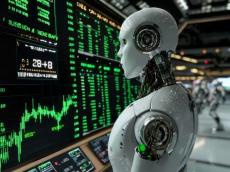|
|
TODAY.AZ / World news
AI investments expected to reach trillions by 2025
30 October 2025 [19:21] - TODAY.AZ

By Alimat Aliyeva
Global investments in artificial intelligence (AI) continue to grow at an unprecedented pace. Spending is projected to reach $1.48 trillion in 2025, marking an increase of nearly 50% compared to the previous year. Analysts predict that by 2026, global AI investment will surpass $2 trillion, and by 2029, it could reach $3.3 trillion, making AI one of the fastest-growing technologies in recent decades, Azernews reports.
Experts note that AI is moving beyond startups and short-term hype, becoming an integral part of the global economy — much like electricity or the Internet once were. Governments and private companies are rapidly expanding data centers, acquiring advanced computing chips, and developing cloud infrastructure to enhance their digital capabilities. In this emerging landscape, global influence is increasingly determined not by territory or natural resources, but by computing power.
At the same time, public concerns persist over the potential for massive job displacement. However, labor market data tells a more nuanced story. Since mid-2023, the unemployment rate in the U.S. has risen slightly — by 0.8 percentage points in industries with low automation and by 0.7 percentage points in highly digitized sectors. Economists argue that these shifts are largely due to broader economic conditions rather than automation itself: as growth slows, companies often cut costs, disproportionately affecting workers in less efficient industries.
History shows that technological innovations do not destroy the labor market but transform it. Just as machines replaced manual labor and computers simplified document management, AI is now taking over routine tasks, allowing humans to focus on analysis, creativity, and strategic decision-making. Analysts emphasize that adaptation and continuous learning are becoming essential skills in this rapidly evolving environment.
Economists estimate that AI could boost global productivity growth by around 0.3 percentage points annually over the next decade, potentially generating several thousand dollars of additional income per person.
Experts identify several possible paths for AI development: Technological acceleration, where AI continues to drive rapid industrial and economic growth; A world of abundance, in which machines produce most goods, reducing human labor needs; Challenges of control, raising ethical and societal concerns.
Human-AI collaboration, where AI complements human capabilities — a scenario that is already beginning to take shape in many industries.
As AI increasingly integrates into daily life and business, societies face both opportunities and challenges. The key question is not whether AI will change the world, but how humanity adapts to harness its potential responsibly.
URL: http://www.today.az/news/regions/263076.html
 Print version
Print version
Connect with us. Get latest news and updates.
See Also
- 31 October 2025 [21:50]
Character.ai limits AI chat access for underage users - 31 October 2025 [19:52]
Pakistan agrees to continue conditional ceasefire with Afghanistan - 31 October 2025 [19:23]
France launches world's first EV-charging motorway - 31 October 2025 [09:00]
Puma to cut 900 jobs - 30 October 2025 [23:55]
Ankara, London cement strategic alliance with Eurofighter Typhoon agreement - 30 October 2025 [23:21]
Crop failure threatens Nutella supply - 30 October 2025 [22:50]
Export surge tops $390 bln, diversifying trade across 224 markets - 30 October 2025 [21:50]
Fitness center launches weight loss contest with Porsche prize - 30 October 2025 [21:23]
President Erdo?an announces monthly production of eight Altay tanks - 30 October 2025 [19:21]
AI investments expected to reach trillions by 2025
Most Popular
 Azerbaijani Foreign Minister meets Omani counterpart to boost bilateral cooperation
Azerbaijani Foreign Minister meets Omani counterpart to boost bilateral cooperation
 Azerbaijan, Oman discuss deepening partnership during official talks
Azerbaijan, Oman discuss deepening partnership during official talks
 BIG to host first international conference on Belgian colonialism
BIG to host first international conference on Belgian colonialism
 Pakistan-Afghanistan talks ended without results in Istanbul
Pakistan-Afghanistan talks ended without results in Istanbul
 Amazon to lay off up to 30,000 employees in its largest job cuts
Amazon to lay off up to 30,000 employees in its largest job cuts
 Azerbaijan strengthens green financing framework for renewable energy projects, says official
Azerbaijan strengthens green financing framework for renewable energy projects, says official
 Azeri Light price declines
Azeri Light price declines
